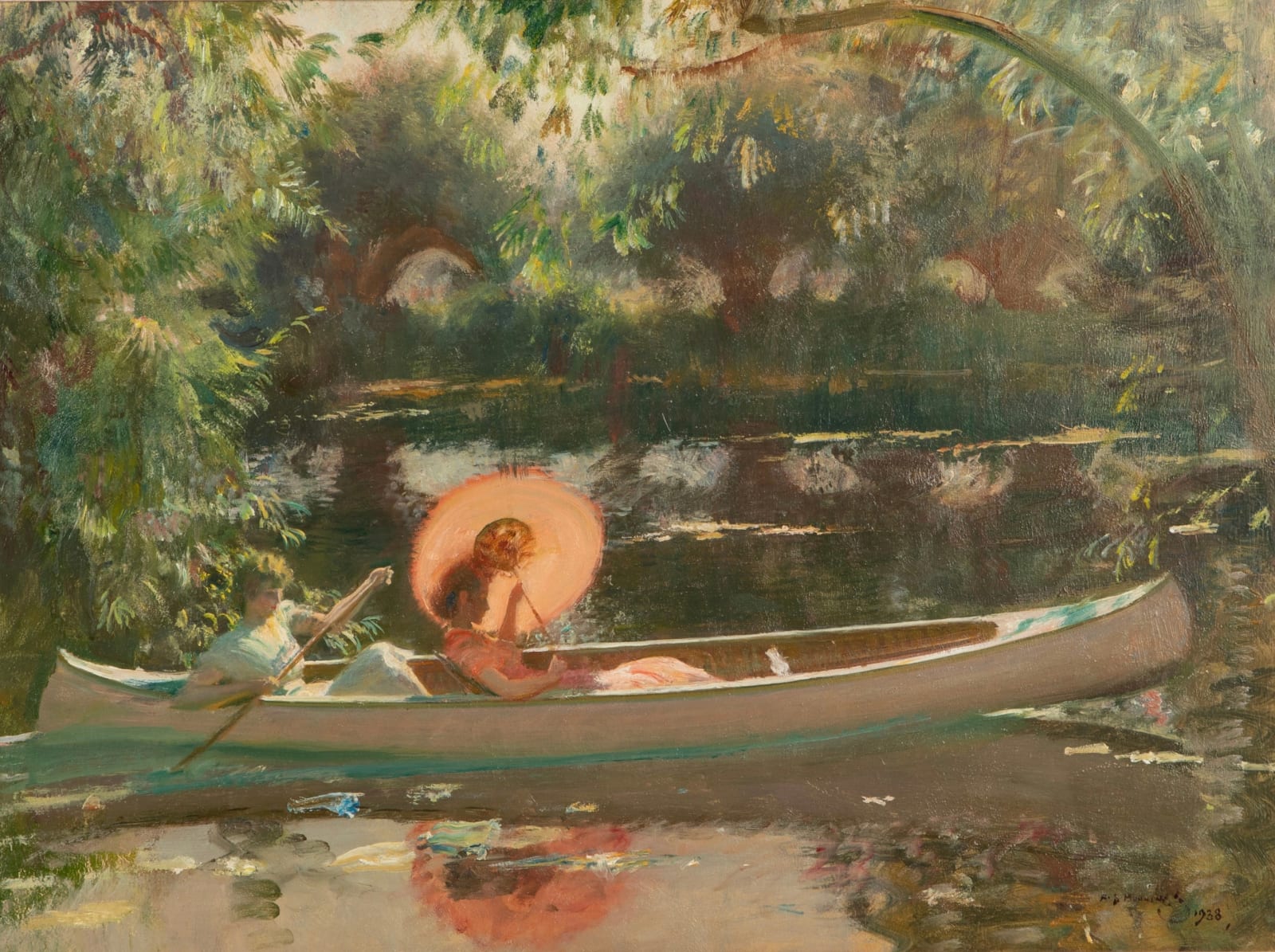Alfred Munnings 1878-1959
Framed: 67 x 82 cm.; 26¼ x 32¼ in.
‘...Willows, the river, two girls drifting
in a canoe – an old theme of past years
taken up again. Sunlight streaming through
a transparent pink Japanese sunshade –
exquisite – a challenge to the eyes. So fine
was the September weather that I did many
pictures on that spot.’
A.J. Munnings, The Finish, Bungay, 1952, p. 60
Within the pantheon of British landscape painting, few artists have captured the fleeting qualities of light and atmosphere with the poetic sensibility shown in Sir Alfred Munnings’s The Pink Parasol – Study – September Afternoon. Through skilled use of colour, composition and brushwork, Munnings transforms a modest riverside scene into a luminous tribute to the Impressionist ideal of plein-air painting.
Two figures are seated within a white Canadian canoe beneath the drooping branches of ancient willows along the River Stour near Flatford Mill. The pink parasol, serving as the painting’s main focal point, stands out with its soft salmon-rose colour against the darker pools of water. Elegantly held by one of the two female figures, this seemingly simple accessory becomes a means to explore the transformative effect of light.
The river’s surface acts as a mirror of remarkable intricacy, capturing not only the reflected forms of the canoe, parasol and figures but also the very spirit of the overhanging willows and the interplay of light filtering through their pendant branches. Munnings employs broken colour and varied brushstrokes to suggest the movement and shimmer of water while maintaining the overall impression of stillness that characterises this September afternoon. The reflections are not simple duplicates but interpretations, slightly distorted and softened, creating a dreamlike quality that elevates the scene beyond literal reflection.
Growing up in Mendham, located on the bank of the river Waveney in Suffolk, and the son of a miller, Munnings had a love of river subjects that is reflected throughout his career. Stranded of 1898 (Bristol City Art Gallery) is one of the earliest examples. Munnings made several iterations of the present work with the earliest, White Canoe, exhibited in at the Royal Academy in 1924. Some fifteen years later Munnings painted The Pink Parasol – Study – September Afternoon, which he worked into a larger version, September Afternoon, 1939, housed in the Sir Alfred Munnings Art Museum, Castle House, Dedham.
Fiercely critical of Modernism, controversially so during his tenure as President of the Royal Academy, Munnings upheld the principles of representational work, distilled through the lens of Impressionism to which he was so ably gifted. Of his landscapes, they echo the pastoral tradition established by Constable in the same region, and remain as evocative nearly a century on. Painted in 1938, with the impending outbreak of World War II, the scene of tranquillity and care-free days holds added poignancy.
Provenance
Frost and Reed, London
The Roberts Gallery, Toronto
Murray MacAllister, circa 1960, thence by descent
Christie's, New York, 1 December 2006, lot 124
Richard Green Fine Paintings, London
Private Collection



